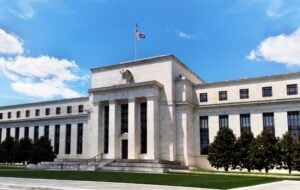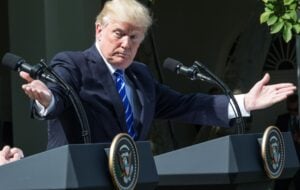
A fundamental tenet of macroeconomics is that central banks should be allowed to conduct monetary policy independent of short-term politics. Separating monetary policy from fiscal policy allows the central bank to manage the economy’s money supply without picking winners and losers and without circumventing the Congressional process. The Federal Reserve is not fully independent, but its recent actions are tantamount to fiscal policy, which exposes it to greater political pressures that might influence its policy decisions.
There is broad agreement among economists that central banks should be independent. It is taught in virtually every macroeconomics textbook and widely discussed in the academic literature. A 2016 survey of macroeconomists asked whether “it is desirable to maintain central bank independence” and found that 94% percent either agreed or strongly agreed. As the Fed’s website describes, “Experience around the world has also shown that countries with independent central banks that are able to make decisions free from political influence have better economic outcomes for their citizens.”
Independence has many aspects, but the most fundamental rule is that the central bank’s monetary policy decisions should not be determined by the government’s fiscal policy objectives. If a legislature or executive can order the central bank to print money, then the government can spend without limit. Increasing the quantity of money reduces its value, which can lead to hyperinflation and economic disaster as seen in countries such as Zimbabwe, Venezuela, and Argentina.
Even when not at risk of hyperinflation, fiscal and monetary policies are best kept separate. The money supply is a broad instrument that affects the entire economy. Every central bank faces the challenge of providing the optimal quantity of money demanded in the economy without creating an over- or under-supply. Fiscal policy, by contrast, is more targeted and also more subjective since some people benefit while others are harmed. The questions of who should be taxed and how the funds should be spent are value-based decisions that should be openly debated and decided by democratic means.
Central banks should restrict their attention to monetary policy and leave fiscal policy to be determined by the democratic process. They should also seek to prevent political interference in their monetary policy decisions. Political incumbents, for example, might pressure central bankers to pursue stimulative monetary policy before an election, even if it may lead to a recession thereafter. President Nixon famously pushed Fed Chairman Arthur Burns to help him win reelection in 1972, which kicked off a period of economic stagflation. As former Fed Chairs Volcker, Greenspan, Bernanke, and Yellen together wrote, “The economy functions best when the central bank is free of short-term political pressures.”
This is not to suggest that the Fed should be beyond reproach. The agency was established by Congress, which sets its goals and provides oversight to ensure its actions are consistent with those goals. Congress could, for example, require the Fed to follow a monetary policy rule, even if only as a nonbinding benchmark. The rules and objectives set by Congress should ideally offer transparency and democratic accountability while helping the Fed maintain independence from short-term political pressure.
Although no central bank is fully independent, Fed officials generally resist pressure to politicize their policy decisions. Chair Powell, in particular, has defended Fed independence and deflected constant criticism from President Trump. His commendable resolve has helped lower the Fed’s political profile. The Fed’s recent actions, in contrast, have heightened its political exposure by venturing into the realm of fiscal policy.
In response to the coronavirus outbreak and ensuing lockdown, the Fed created a series of emergency lending programs in areas there were previously outside its authority. The Coronavirus Aid, Relief, and Economic Security (CARES) Act authorizes the Fed to make up to $2.3 trillion in loans to state and local governments, small and medium-sized businesses, and even to large corporations. The Municipal Liquidity Facility (MLF) provides funds to state and local governments, something previous Chairs Bernanke and Yellen said the Fed should never do. The Main Street Lending Program (MSLP) provides loans to small and medium-sized businesses, which is not the Fed’s job. The Secondary Market Corporate Credit Facility (SMCCF) allows the Fed to buy junk-grade corporate bonds while the Primary Market Corporate Credit Facility (PMCCF) provides funds directly to large corporations, neither of which has anything to do with ensuring the liquidity of financial markets.
These programs vastly exceed the Fed’s mandate. They require the Fed to engage in fiscal policy and, as such, open the door to political pressures. On the MLF, for example, the Fed faced immediate pressure to expand its list of eligible municipalities, to which it has already acquiesced, and was then pressured further to increase the number and types of bonds it would buy. The Fed loosened the eligibility requirements of the MSLP to include a wider range of businesses and is likely to extend it further to include nonprofit organizations. The SMCCF was expanded to create the Fed’s own bond market index and increase its portfolio to include any corporate bonds that meet its minimum rating and maturity criteria.
The Fed’s new lending programs have nothing to do with its missions to manage the money supply and support liquidity in the banking system. Far beyond simply coordinating policy with the Treasury, the Fed is being asked to conduct policy as if it were the Treasury.
Nor have these programs been forced upon the Fed. The CARES Act gives the Fed permission to pursue these facilities, but it does not require the Fed do so. In contrast to previous Chairs Bernanke and Yellen who publicly opposed the Fed funding municipal governments and other fiscal policy actions, presiding Chair Powell seems to be an enthusiastic supporter of such programs. However, it is not too late to close these fiscal-policy facilities before causing further harm to the Fed’s reputed independence.
These new lending programs are just getting started. The MLF did not begin purchasing bonds until early June. The MSLP is still not fully operational. The SMCCF has thus far purchased exchange-traded funds (ETFs) but no individual bonds. While the Fed has already promised some funds to awaiting businesses and municipalities, it could still choose not to allocate the remaining credit. Doing so seems especially prudent given recent signs that the economic recovery has already begun.
To be an effective central bank, the Fed must strive to remain independent of short-term political influence. A strict separation of monetary and fiscal policies helps bolster central bank independence. In contrast, the Fed’s new emergency lending programs go well beyond its mission and open it up to undesirable political influence. Fed officials should bring an early end to its new lending facilities in order to avoid the politics of fiscal policy and to maintain independence in their own policy decisions.




